Welcome to Oromia, the home of many beautiful birds. From the many species of migratory birds to the colorful and vibrant local birds, Oromia is a bird-lovers paradise. Whether you are a professional bird-watcher or a casual observer, there is something for everyone in Oromia.
From the common and widespread seed-eaters to the rare and endangered species, all of these birds contribute to the beauty of this region. With a variety of habitats, from wetlands to dry woodlands, Oromia provides a perfect home for the birds living there.
Come explore this beautiful region and the birds that inhabit it!
1. Blue-Winged Goose
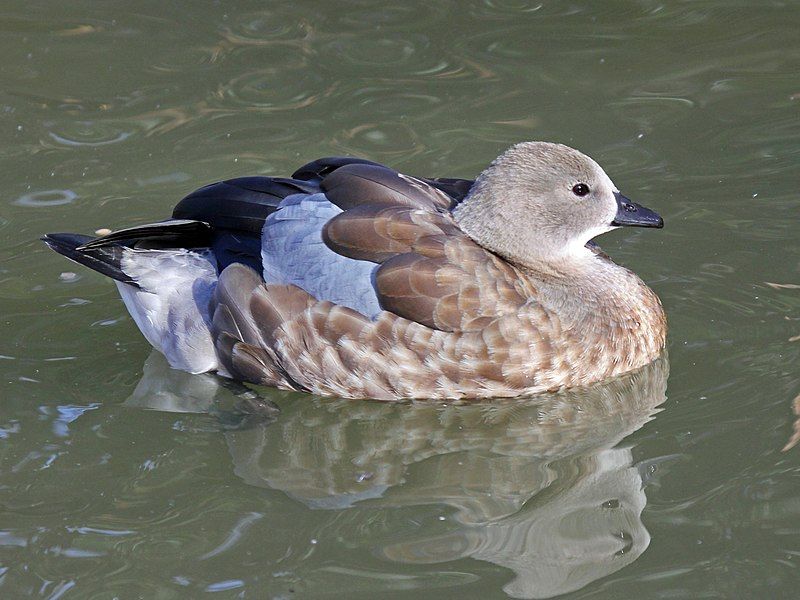
The blue-winged goose is a unique bird species found exclusively in Ethiopia. It belongs to the family of waterfowls, which also includes ducks, geese, and swans.
This species is the only member of its genus, Cyanochen, which is why it is sometimes referred to as the Cyanochen goose. This species of bird is quite large, with an average adult size of around 18 inches in length.
It has a predominantly grey plumage, with a white chest and a black head.
The most striking feature of this species is its wings, which have a prominent blue hue on the underside. The blue-winged goose inhabits a variety of wetland habitats in Ethiopia, including marshes, lakes, rivers, and flooded grasslands.
It feeds mainly on aquatic vegetation, such as water lilies and other aquatic plants.
This species is known to be a fairly social bird, often forming large flocks when foraging and migrating. Although the blue-winged goose is not considered to be endangered, it is still threatened by habitat destruction, hunting, and other human activities.
In response, the Ethiopian government has designated this species as a protected species and has taken several steps to protect its habitat. Despite these efforts, the blue-winged goose is still vulnerable, and much more needs to be done to ensure its conservation.
| Kingdom | Animalia |
| Phylum | Chordata |
| Class | Aves |
| Order | Anseriformes |
| Family | Anatidae |
| Genus | Cyanochen |
| Species | C. cyanoptera |
2. Speckled Pigeon
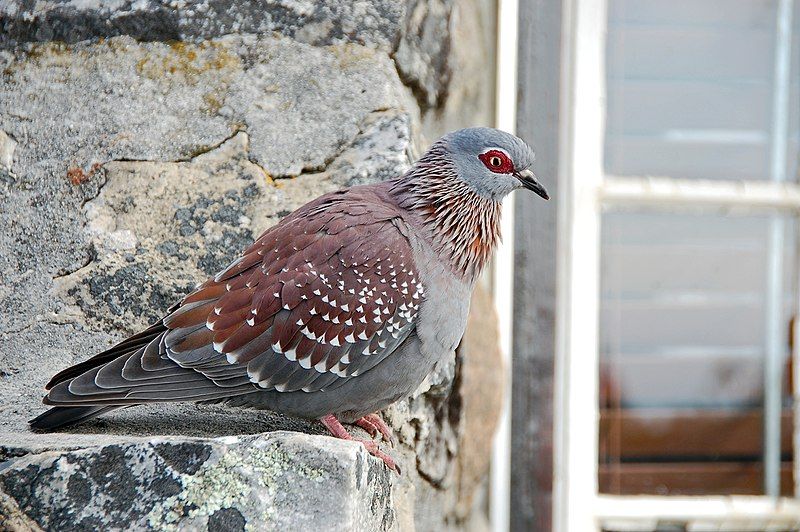
The speckled pigeon is a species of bird that is native to most of Africa south of the Sahara desert. It is a common and widespread species, found in many open habitats, though there are some areas where its presence is lacking.
This species of pigeon is also known as the African rock pigeon or Guinea pigeon. It is a resident breeding bird, meaning that it returns to the same area to nest and reproduce each year.
The speckled pigeon is a sociable bird, often found in small flocks in open areas such as fields and grassland. It has a wide variety of calls, some of which include a cooing sound and a squawking alarm call.
The speckled pigeon is a fairly large bird, with a length of about 39 centimeters and a wingspan of 63 centimeters. The plumage is predominantly gray, with a black tail and wings, and white spots on its wings.
Its diet consists mainly of seeds and grains, though it also feeds on insects and other small invertebrates.
| Kingdom | Animalia |
| Phylum | Chordata |
| Class | Aves |
| Order | Columbiformes |
| Family | Columbidae |
| Genus | Columba |
| Species | C. guinea |
3. Fulvous Whistling Duck
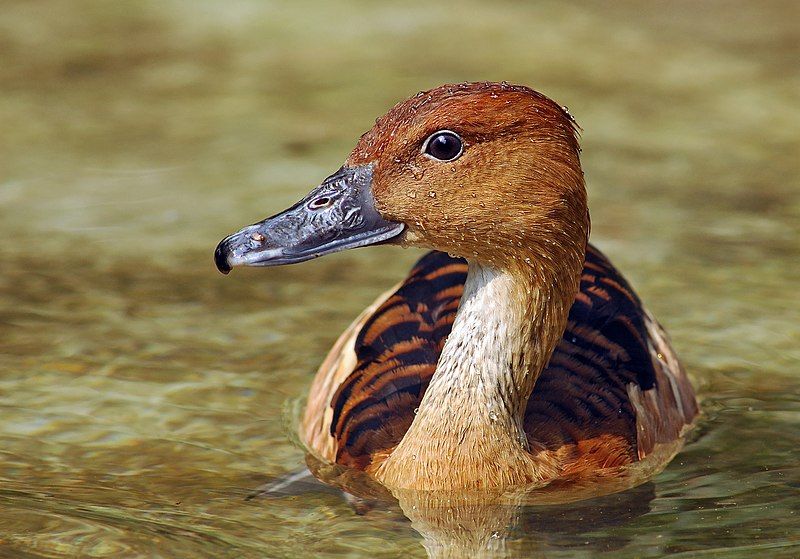
The Fulvous Whistling Duck, also known as the Fulvous Tree Duck, is a species of waterfowl that is found in many different parts of the world.
It breeds in tropical locations, including Mexico and South America, the West Indies, the southern United States, sub-Saharan Africa, and the Indian subcontinent.
The Fulvous Whistling Duck is easily recognizable by its unique plumage, which is of a light brown color, and its distinctive whistle. The Fulvous Whistling Duck is a highly social bird, often found in large flocks of up to several hundred birds.
It is an excellent swimmer and will often forage for food in shallow water. It feeds on aquatic plants, insects, and small crustaceans.
It also has an impressive flight speed, reaching up to 25 miles per hour. The Fulvous Whistling Duck has a wide range of habitat preferences, being able to live in wetlands, rivers, lakes, reservoirs, shallow marshes, and even agricultural fields.
It is an adaptable bird and has been able to thrive in heavily developed areas. The Fulvous Whistling Duck is an important species for conservation efforts, as it is a keystone species in many ecosystems.
It can help to maintain healthy aquatic environments by controlling the population of small aquatic creatures, and it can also help to spread water-loving plants.
The Fulvous Whistling Duck is also a popular species amongst birdwatchers, as it is relatively easy to observe and its unique voice adds to the enjoyment.
| Kingdom | Animalia |
| Phylum | Chordata |
| Class | Aves |
| Order | Anseriformes |
| Family | Anatidae |
| Genus | Dendrocygna |
| Species | D. bicolor |
4. Great Cormorant
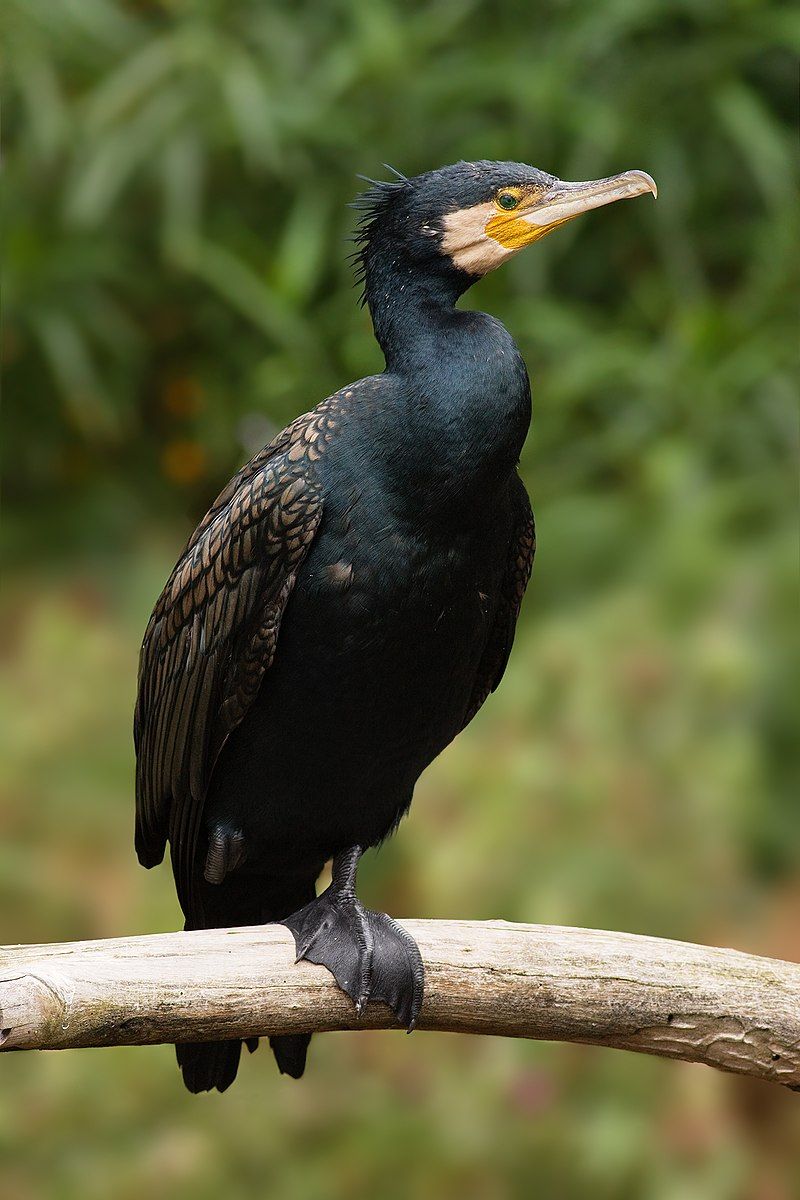
The great cormorant, also known as the black shag or kawau in New Zealand, has been known by different names in different regions around the world.
In the Northern Hemisphere, it was historically referred to as the great black cormorant, while in Australia it is known as the black cormorant, and in India, it is known as the large cormorant.
It belongs to the cormorant family of seabirds, which makes it a widespread species. These birds are found near water, like rivers or oceans, and they have a strong swimming ability.
Cormorants are known for their long necks and webbed feet, which help them to swim and dive more efficiently.
They are also known for their impressive wingspan, which can reach up to six feet in some species. Cormorants are carnivorous, feeding mostly on fish, crustaceans, and other aquatic life.
They use their sharp, hooked beaks to capture their prey and their strong wings to dive into the water.
They also have a unique ability to spread their wings and dry themselves after spending time in the water. The great cormorant is a large species of seabird, with a black body and a yellowish head. Some species have white markings on their wings and tail.
It is a solitary bird, usually flying in pairs or small groups. It is also an important species for local fishing communities, as it helps keep fish populations in check. The great cormorant is a fascinating species and an important part of the natural world.
It is found in many parts of the world and has been known by a variety of different names, depending on its location. Its impressive swimming and diving abilities, combined with its large wingspan, make it a distinctive and impressive species of seabird.
| Kingdom | Animalia |
| Phylum | Chordata |
| Class | Aves |
| Order | Suliformes |
| Family | Phalacrocoracidae |
| Genus | Phalacrocorax |
| Species | P. carbo |
5. Long-Crested Eagle
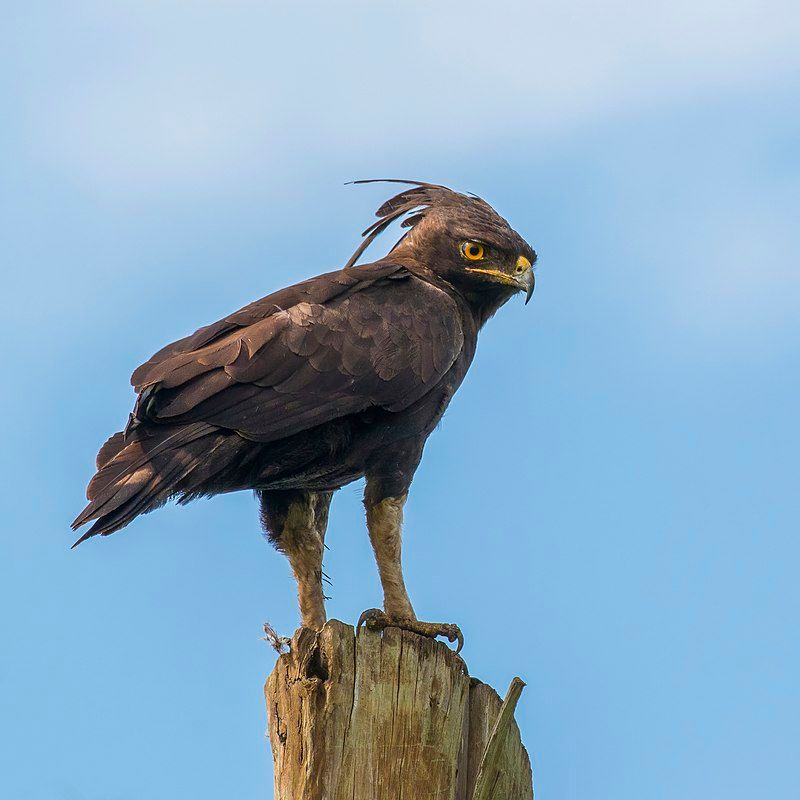
The long-crested eagle is a majestic bird found in Africa. It is part of the family Accipitridae, which includes all types of eagles. The long-crested eagle stands out among its relatives due to its unique feathers, which form a long and shaggy crest.
The long-crested eagle is the sole species in the genus Lophaetus, making it a one-of-a-kind species. The long-crested eagle is a formidable predator. It is an apex hunter, preying on small mammals, reptiles, and other birds.
It has keen eyesight and an impressive wingspan, allowing it to soar over the African landscape in search of its prey.
It is also an agile flier and can make sharp turns and sudden dives to catch its prey. The long-crested eagle is an impressive bird, with its majestic plumage and impressive hunting skills.
It is an important part of the African landscape and an iconic symbol of the continent’s beauty and power.
| Kingdom | Animalia |
| Phylum | Chordata |
| Class | Aves |
| Order | Accipitriformes |
| Family | Accipitridae |
| Genus | Lophaetus |
| Species | L. occipitalis |
6. Ring-Necked Dove
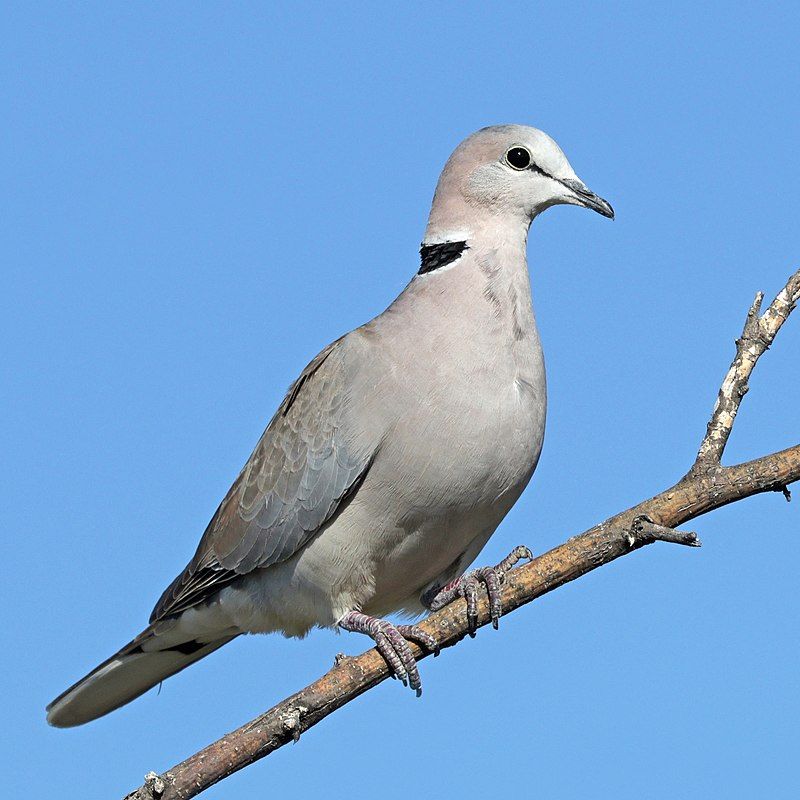
The ring-necked dove is a type of dove that is commonly found in East and southern Africa and can be easily recognized by its distinct black and white neck ring. This species of dove is known by a few other names, including the Cape turtle dove and the half-collared dove.
It is a relatively sedentary bird, meaning that it typically stays in one place for extended periods of time, rather than migrating or traveling long distances. The ring-necked dove is quite abundant in its natural habitat, living in a variety of open areas.
This includes savannas, woodlands, grasslands, and more. The dove’s diet consists of seeds, fruits, and flowers, and it is usually seen in pairs or small groups. In addition to their black and white neck ring, they have a greyish-brown body, a black bill, and red eyes.
All of these features make the ring-necked dove a beautiful and unique bird.
| Kingdom | Animalia |
| Phylum | Chordata |
| Class | Aves |
| Order | Columbiformes |
| Family | Columbidae |
| Genus | Streptopelia |
| Species | S. capicola |
7. Egyptian Goose
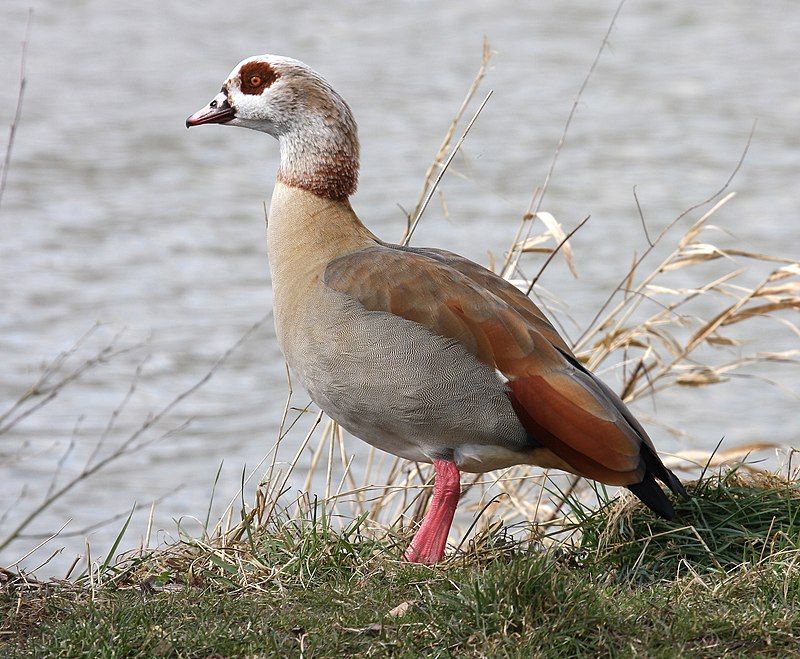
The Egyptian goose is a native species of Africa, belonging to the duck family Anatidae. This species is widely regarded as an ornamental bird, due to its striking appearance and tendency to form social bonds with humans.
As a result of this popularity, the species has been intentionally introduced to Europe, the United States, and other parts of the world outside of its natural range.
This introduction has been successful in some areas, leading to the presence of breeding populations in places such as the United Kingdom and Israel.
This phenomenon highlights how humans can have a significant impact on the distribution of animal species, both intentionally and unintentionally.
| Kingdom | Animalia |
| Phylum | Chordata |
| Class | Aves |
| Order | Anseriformes |
| Family | Anatidae |
| Genus | Alopochen |
| Species | A. aegyptiaca |
8. Black-Winged Lovebird
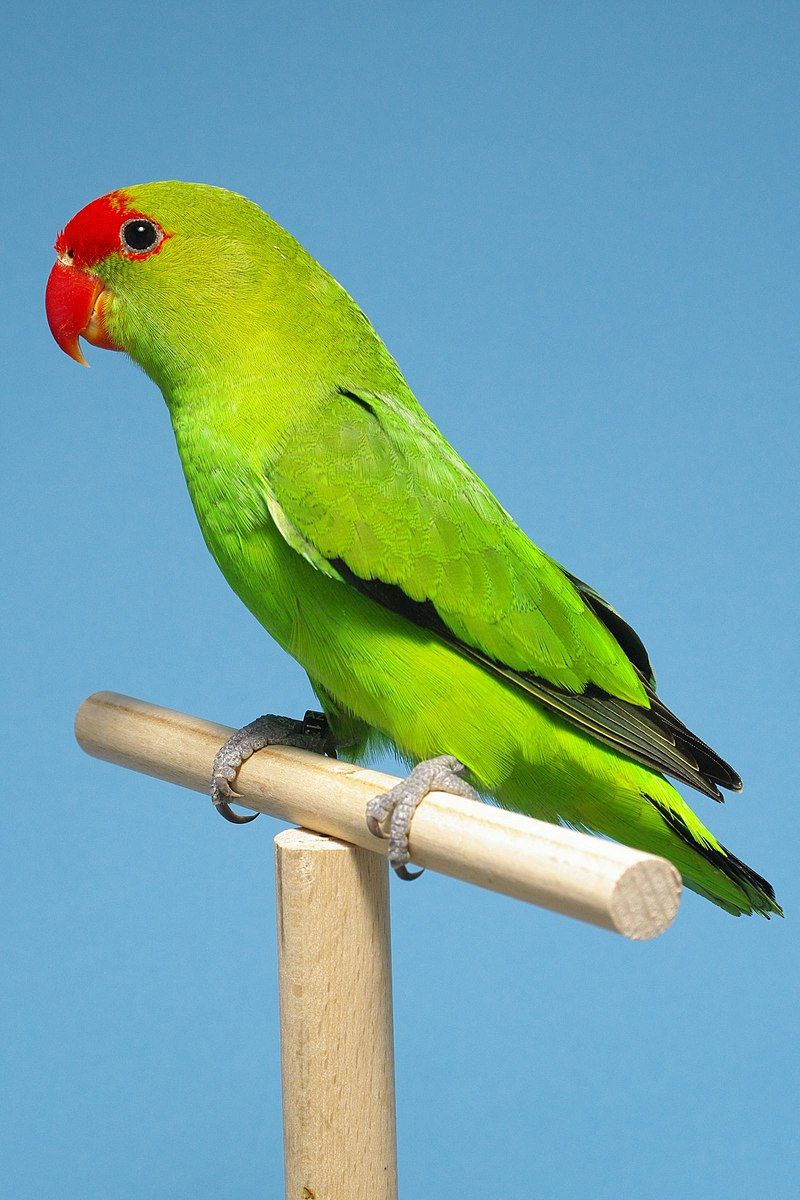
The Abyssinian lovebird, also known as the black-winged lovebird, is a parrot that is predominantly green in color. It is the largest of the lovebird family, measuring about 16.5 cm long.
The male of the species can be identified by the distinctive red forehead, while the female has an all-green head. This species is a part of the parrot family and can be found in regions of Africa.
The Abyssinian lovebird is a social bird, living in flocks in its natural habitat. It can be found in various wooded areas, including forests and cultivated lands. It has a wide range of diets, which include seeds, fruits, berries, and sometimes insects.
In captivity, it needs a variety of foods in order to remain healthy. The Abyssinian lovebird is an intelligent bird that can be trained to mimic human speech. It is also capable of learning simple tricks.
As with all parrots, it needs plenty of attention and interaction with its owner in order to remain happy and healthy. In the wild, the Abyssinian lovebird lives in pairs or small groups. It builds its nest in tree hollows or on cliffs.
The female lays two or three eggs and both parents incubate them. The young birds fledge after about six weeks and can reach maturity at around one year of age. The Abyssinian lovebird is a beautiful bird with a lot of character and charm.
With its vibrant colors, intelligence, and social nature, it makes a wonderful pet for those who are willing to invest the time and effort into caring for it.
| Kingdom | Animalia |
| Phylum | Chordata |
| Class | Aves |
| Order | Psittaciformes |
| Family | Psittaculidae |
| Genus | Agapornis |
| Species | A. taranta |
9. Eastern Plantain-Eater
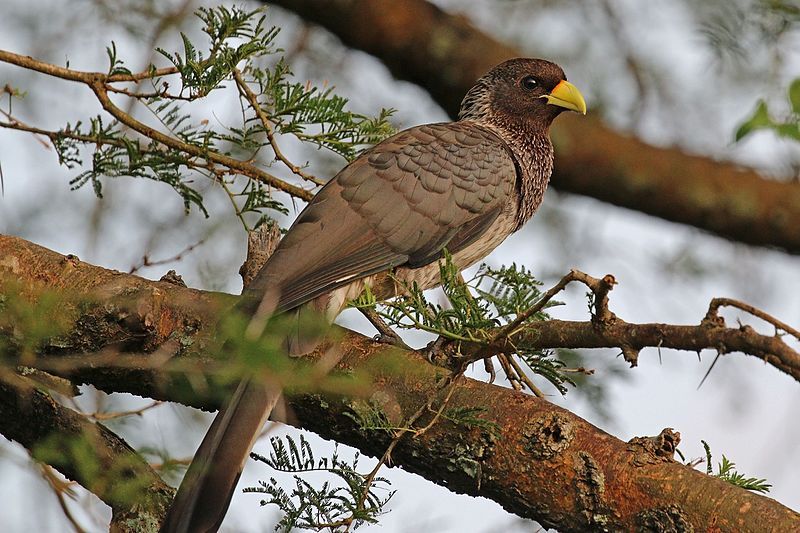
The eastern plantain-eater is a species of bird found in tropical East Africa. It belongs to the family of Turacos, which include large arboreal birds that are close relatives of passerines.
The eastern plantain-eater is a resident breeder in open woodlands and it builds its nest in a platform of trees. It lays two or three eggs at a time. This species is quite large compared to other birds found in its habitat and it is mostly grey in color.
It feeds primarily on fruits and plantains, hence the name. The eastern plantain-eater is an important part of the local ecosystem, as it helps disperse the seeds of the fruits it eats. It also plays an important role in controlling insect populations.
| Kingdom | Animalia |
| Phylum | Chordata |
| Class | Aves |
| Order | Musophagiformes |
| Family | Musophagidae |
| Genus | Crinifer |
| Species | C. zonurus |
10. White-Collared Pigeon
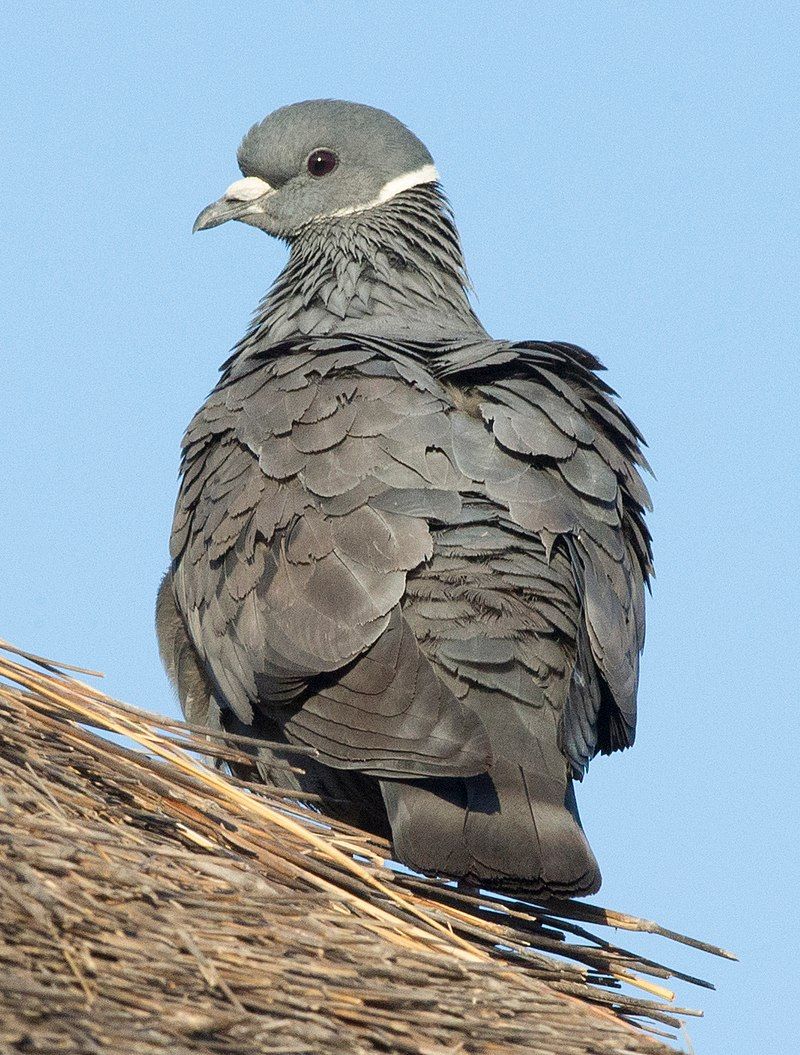
The white-collared pigeon is a species of bird belonging to the Columbidae family. It is native to the Ethiopian highlands in Eritrea and Ethiopia and can be found in a variety of habitats. This species is monotypic, meaning that there are no subspecies recognised.
It inhabits areas with rocky cliffs and gorges, such as countryside, as well as town centres. Due to its unique colouration, the white-collared pigeon is easily recognisable.
It has a white collar around its neck, and its head and back are dark grey, while its breast is light grey. The wings and tail are brownish-black, while the underparts are a pale grey-brown.
The white-collared pigeon is usually found in pairs or small groups and feeds mainly on seeds and grains. It is considered a common species and has adapted well to human presence. It is also known to nest in rock crevices and overhangs, as well as on houses and other buildings.
Overall, the white-collared pigeon is a unique species of bird with a limited range. It is an adapted species that is able to inhabit a variety of habitats, from the countryside to town centres.
It is a common species with no recognised subspecies, and its distinctive colouration makes it easily recognisable.
| Kingdom | Animalia |
| Phylum | Chordata |
| Class | Aves |
| Order | Columbiformes |
| Family | Columbidae |
| Genus | Columba |
| Species | C. albitorques |
11. Thick-Billed Raven
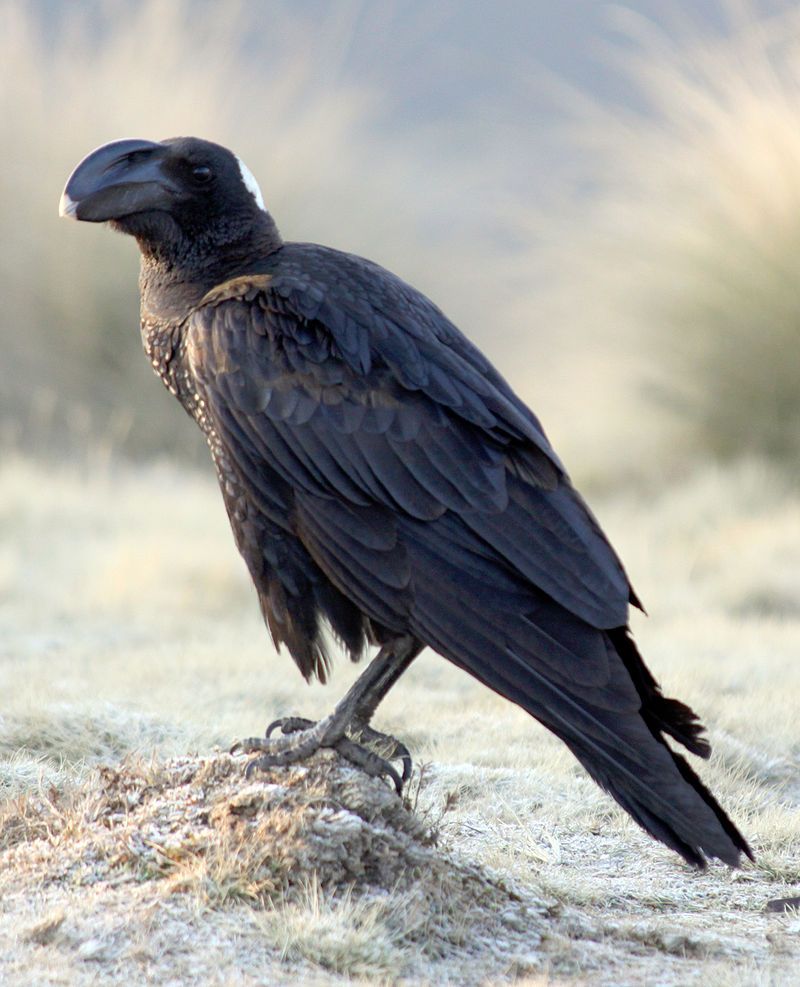
The thick-billed raven is a species of corvid, a family of birds that includes crows and jays. This species is endemic to the Horn of Africa, which is located in Northeast Africa.
It is distinguished from other birds in its family by being the largest of its kind, both in terms of size and wingspan. In fact, it is the largest bird in the entire passerine family, a group of birds that includes songbirds, warblers, and finches.
This species is known for its large, thick bill and glossy black plumage. It is an omnivore, meaning it eats a variety of foods, including small mammals, insects, carrion, and seeds. It also sometimes scavenges on the remains of larger animals, such as zebras and wildebeest.
The thick-billed raven has a strong social bond and is often seen in pairs or small groups. Its loud, harsh calls can be heard from long distances, and it is considered by some to be among the most intelligent of birds.
| Kingdom | Animalia |
| Phylum | Chordata |
| Class | Aves |
| Order | Passeriformes |
| Family | Corvidae |
| Genus | Corvus |
| Species | C. crassirostris |
12. Emerald-Spotted Wood Dove
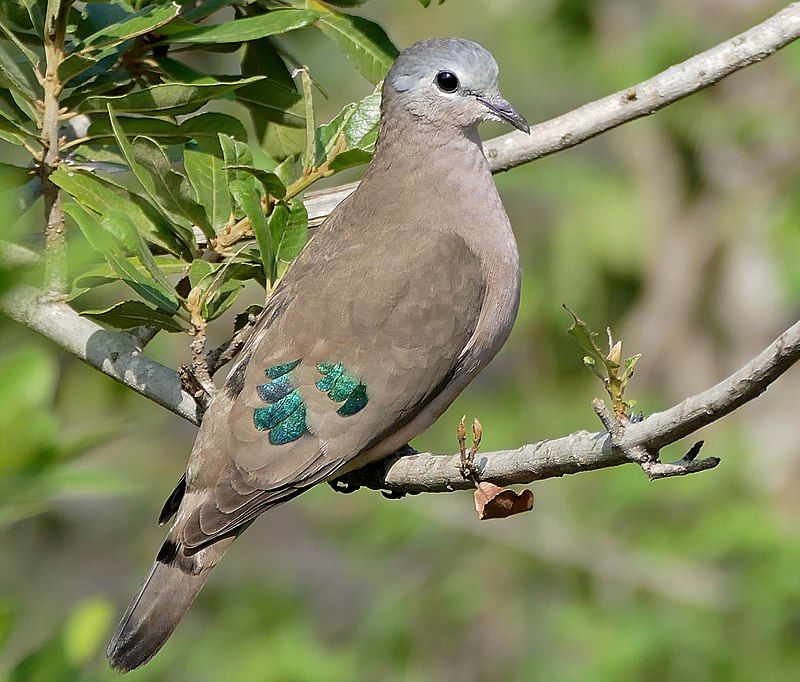
The emerald-spotted wood dove is a species of bird belonging to the family Columbidae, which is found across eastern and southern Africa.
This species is typically associated with open and drier deciduous woodland and secondary growth habitats and is absent from evergreen rainforest and semi-desert areas.The emerald-spotted wood dove is known to inhabit many different types of habitats, including grassland, savanna, and open woodlands.
It is a medium-sized dove, measuring approximately 28 cm in length, and has an easily recognizable emerald-green patch on its wings.
This species feeds primarily on seeds and insects and is often seen in pairs or small flocks. The emerald-spotted wood dove is a popular bird among birdwatchers and is of conservation concern due to habitat loss and degradation.
Its range is thought to be decreasing, although it is still fairly common in parts of its range.
It is classified as “Least Concern” by the International Union for Conservation of Nature.In order to protect this species, it is important to conserve its habitat and ensure that it is not subject to further destruction or degradation.
This can be done by ensuring that natural areas are protected from human activities such as logging, mining, and development. It is also important to protect the bird from hunting and trapping, as these activities can have a negative impact on population numbers.
Finally, it is important to monitor the population of the emerald-spotted wood dove, to ensure that it is not in danger of extinction.
| Kingdom | Animalia |
| Phylum | Chordata |
| Class | Aves |
| Order | Columbiformes |
| Family | Columbidae |
| Genus | Turtur |
| Species | T. chalcospilos |
13. Hartlaub’s Bustard
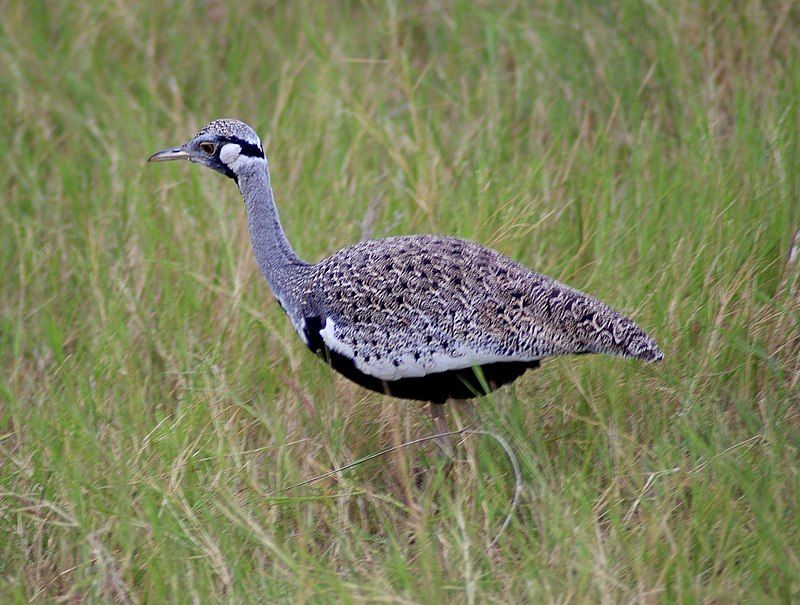
Hartlaub’s bustard is a species of bird that resides in the family Otididae and is found in various countries in East Africa.
Its range includes Ethiopia, Kenya, Somalia, Sudan, Tanzania, and Uganda, and it typically inhabits open grasslands with grass that can reach up to 1800 meters in height.
The bird was named after the German physician and ornithologist Gustav Hartlaub, who was renowned for his expertise in birds.
He is known to have made significant contributions to the field of ornithology, including descriptions of various bird species that had not been seen before.
Hartlaub’s bustard was named in his honour, both in its common and Latin names, as a way to commemorate his scientific legacy.
| Kingdom | Animalia |
| Phylum | Chordata |
| Class | Aves |
| Order | Otidiformes |
| Family | Otididae |
| Genus | Lissotis |
| Species | L. hartlaubii |
14. Prince Ruspoli’s Turaco
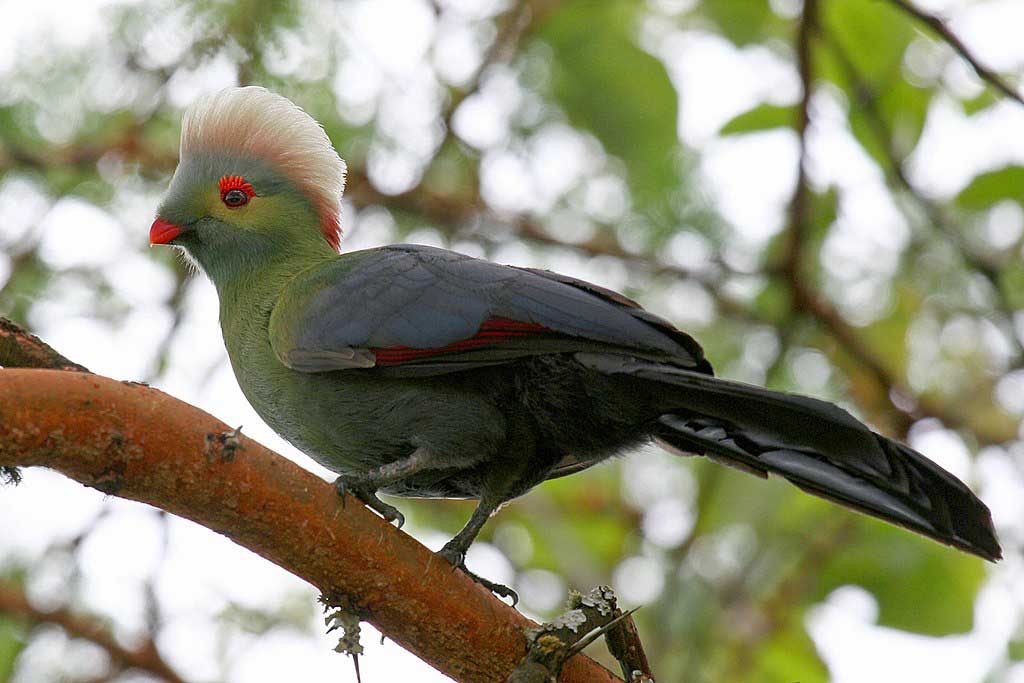
Source: Wikipedia
Ruspoli’s turaco is a species of bird that can only be found in southern Ethiopia. It is part of the Musophagidae family and is a unique and interesting species that has been classified as being threatened due to habitat loss.
The bird’s natural habitat is a subtropical or tropical dry forest, which is an area that is particularly prone to deforestation. This means that the species is losing its home and its food sources, making it harder for the birds to survive.
In order to protect this species, conservation efforts must be made to restore and preserve the natural habitats of the bird. This could include planting new trees and plants, as well as protecting existing forests from further destruction.
Additionally, monitoring the bird’s population and studying its behavior will help to ensure its survival.
| Kingdom | Animalia |
| Phylum | Chordata |
| Class | Aves |
| Order | Musophagiformes |
| Family | Musophagidae |
| Genus | Menelikornis |
| Species | M. ruspolii |
15. Ruddy Shelduck
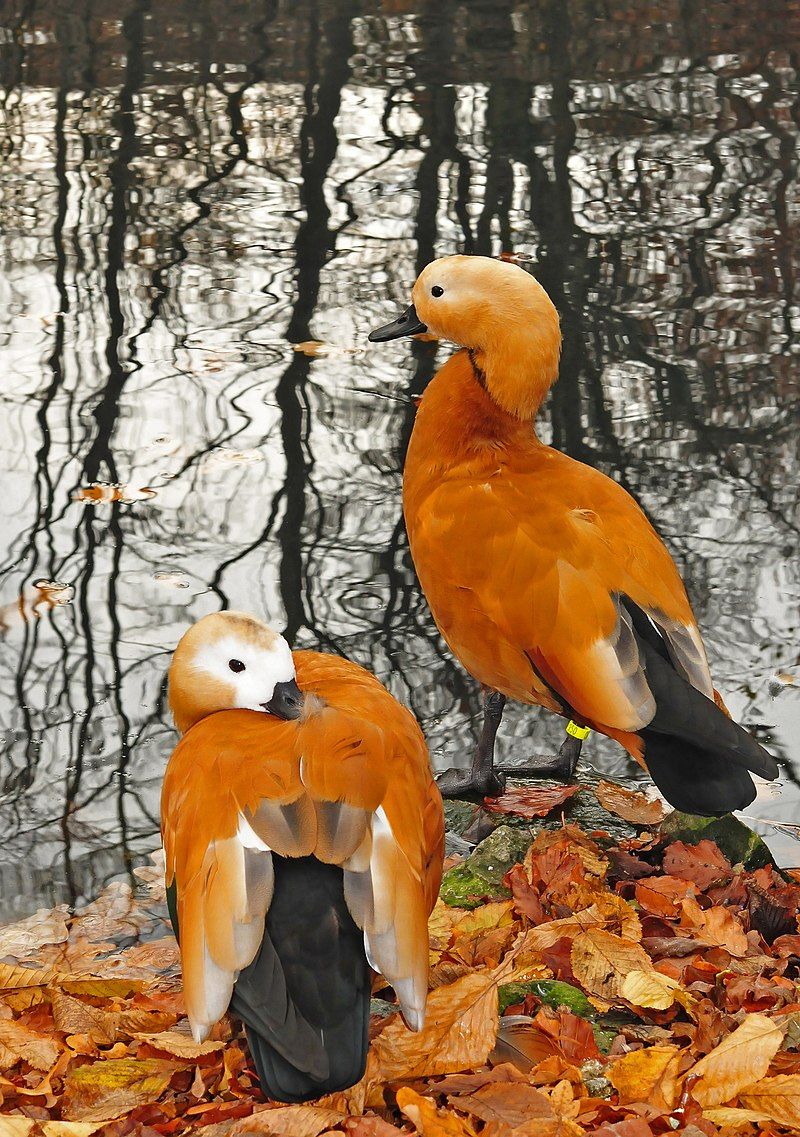
The ruddy shelduck is a member of the family Anatidae, an extensive group of waterfowl species that includes ducks, geese, and swans. This particular species is known as the Brahminy duck in India and is easily identified by its distinct features.
It is a relatively large bird, reaching lengths of 58 to 70 cm and a wingspan of 110 to 135 cm. Its chestnut-colored plumage is highly visible, and its bill and legs are often black. The male and female are similar in appearance, although the male is usually slightly larger.
The ruddy shelduck is found in a variety of habitats, including wetlands, rivers, and lakes. It can also be seen in cultivated areas, such as grasslands and agricultural fields. This species is highly gregarious and often forms large flocks in winter.
They feed on a variety of aquatic plants, invertebrates, and even grains, and are known to be quite vocal when disturbed. The ruddy shelduck is a stunning species that is sure to catch the eye of any birdwatcher.
| Kingdom | Animalia |
| Phylum | Chordata |
| Class | Aves |
| Order | Anseriformes |
| Family | Anatidae |
| Genus | Tadorna |
| Species | T. ferruginea |
16. Spot-Breasted Lapwing
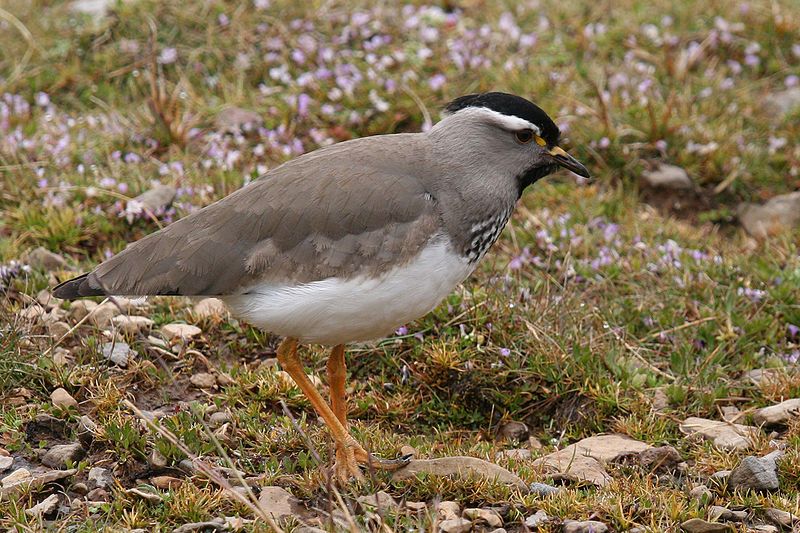
The Spot-breasted Lapwing is a species of bird belonging to the family Charadriidae. Native to the Ethiopian highlands, this lapwing is a stocky bird with a black cap, white eyebrows, black throat, and a breast covered in coarse spots.
The bird has a distinct pattern of black and white feathers, making it easily recognizable. Its size and habitats vary, but its diet primarily consists of insects, worms, and seeds.
It is usually seen in pairs or small groups in open grassland and agricultural land, and occasionally in wetlands. The Spot-breasted Lapwing is considered Near Threatened due to its declining population due to habitat loss and degradation.
Conservation efforts are therefore necessary to protect this species and other birds of the Ethiopian highlands.
| Kingdom | Animalia |
| Phylum | Chordata |
| Class | Aves |
| Order | Charadriiformes |
| Family | Charadriidae |
| Genus | Vanellus |
| Species | V. melanocephalus |
17. Rock Pigeon
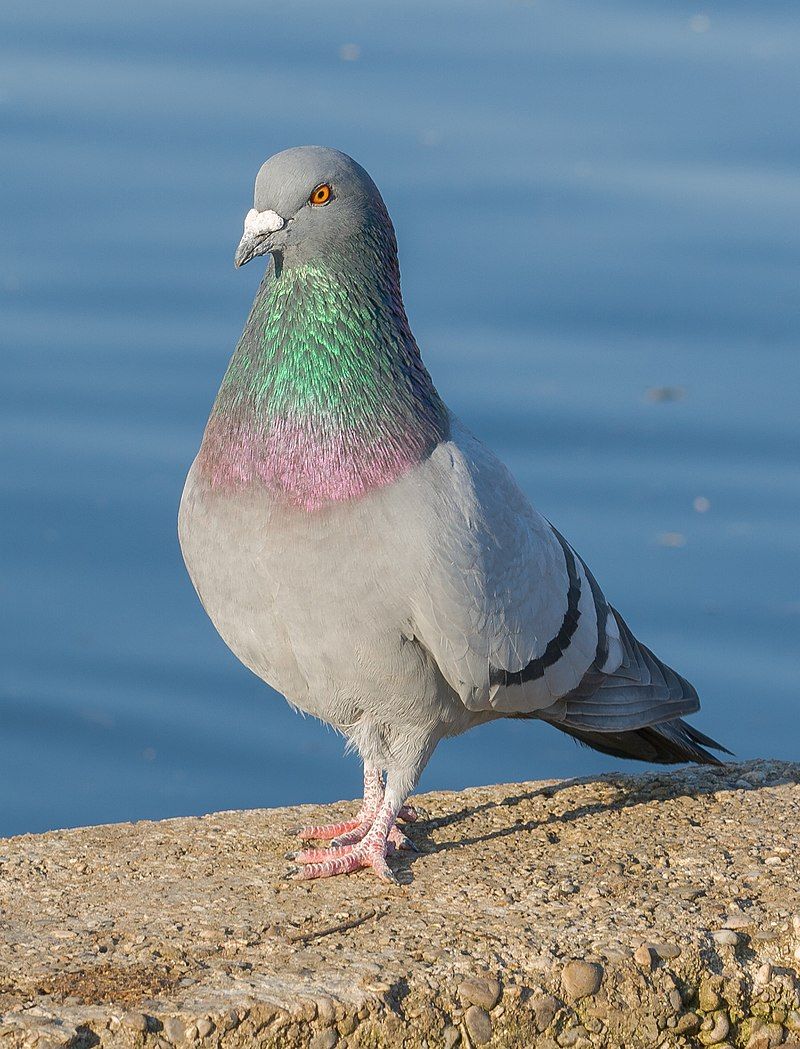
The rock dove, rock pigeon, or common pigeon is a species of bird that belongs to the Columbidae family. It is commonly known simply as the pigeon. The domestic pigeon is a type of pigeon that has been domesticated from this species.
As a result of domestic pigeons escaping and reproducing in the wild, the population of feral pigeons has grown significantly throughout the world.
This is due to the fact that they have adapted to living in close proximity to humans and have been able to thrive in urban environments. They are now considered to be a common sight in many cities.
| Kingdom | Animalia |
| Phylum | Chordata |
| Class | Aves |
| Order | Columbiformes |
| Family | Columbidae |
| Genus | Columba |
| Species | C. livia |
Conclusion
Overall, birds in Oromia are a vital part of the region’s biodiversity and natural beauty. They contribute to the region’s ecology, providing food and shelter for other animals and plants, as well as serving as an important source of food for local people.
The conservation of birds in Oromia is essential for the region’s long-term ecological health, and the local government is working hard to conserve and protect the region’s birds and their habitats.
It is important that local people, governments, and international organizations continue to work together to ensure the long-term survival of birds in Oromia.